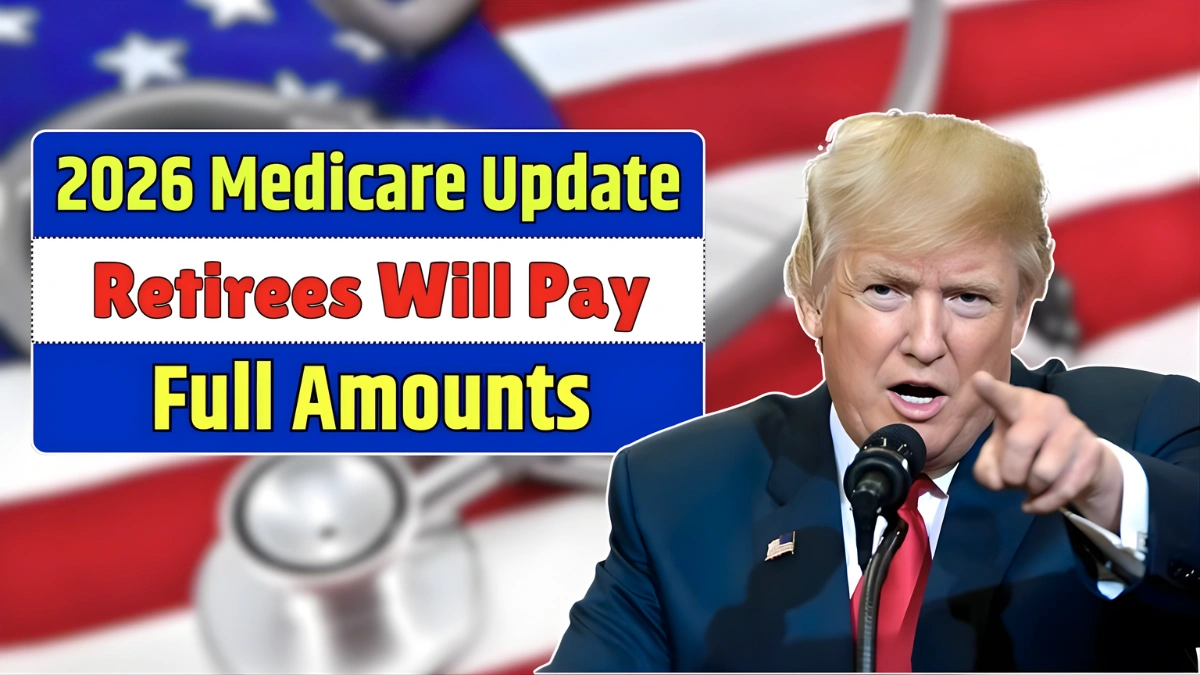Medicare is undergoing a major adjustment in 2026, and retirees are already seeing early warnings about rising premiums, new cost-sharing rules and expanded income-based categories. The biggest change is the clear separation of retirees into two groups: those who will pay the full amounts and those who will be shielded from increases through federal protections.
Here is your complete, Google Discover–friendly breakdown of how Medicare is changing, who is protected and who will face higher payments in 2026.
What Is Changing in Medicare for 2026?
Medicare is adjusting premium rules, income thresholds and subsidy qualifications to manage rising healthcare costs. These revisions affect Medicare Part B, Part D and some Medicare Advantage plans. The new structure places more responsibility on middle- and high-income retirees while protecting seniors with limited means.
Millions of Americans will see different outcomes depending on their income, program eligibility and insurance choices.
Who Is Shielded From Higher Medicare Costs in 2026?
Retirees in the shielded group will have protection against the full premium increases. These seniors continue receiving federal support that covers part or all of their additional monthly costs. Shielded groups include low-income seniors, SSI recipients, Medicaid-eligible individuals and retirees enrolled in Medicare Savings Programs.
These seniors may also receive more support under the 2026 prescription drug reforms, including lower out-of-pocket caps and increased subsidies for essential medications. For many retirees in this group, premium increases will be minimal or nonexistent.
Who Will Pay the Full Amounts in 2026?
Retirees outside assistance programs will fall into the full-payment group, meaning they must absorb the entire 2026 increase in Medicare premiums and drug costs. This group consists largely of middle-income and higher-income retirees who do not qualify for income-based support.
These seniors will pay the full Part B premium, the full Part D premium and any increases in Medicare Advantage plan costs. Retirees with higher Modified Adjusted Gross Income (MAGI) may also face IRMAA surcharges, making their monthly payments significantly higher.
Seniors who recently moved out of income-based programs — because of higher savings, pension increases or Social Security raises — may also shift into the full-payment category.
Why Medicare Is Splitting Retirees Into Two Cost Groups
The divide between shielded and full-payment groups is designed to stabilize Medicare’s long-term financial health while still protecting the most vulnerable seniors. Healthcare costs continue to climb, and Medicare is under pressure from an aging population. The 2026 rule allows the government to:
protect low-income seniors from sudden large increases; manage rising healthcare expenses more predictably; focus subsidies on those who need them most; ensure program sustainability without universal cost hikes
This change creates a more targeted financial system rather than spreading premium adjustments equally across all retirees.
How This Update Will Affect Your 2026 Monthly Bill
Retirees in the shielded group may see little to no increase in their Medicare Part B or Part D premiums, depending on their income and support category. Prescription drug costs may also decrease due to new caps and subsidy expansions.
Retirees in the full-payment group will face the complete premium increases, including any adjustments from their Medicare Advantage or Medigap plans. Those paying IRMAA will see the largest increases, especially if their 2024–2025 tax filings reflect higher income.
What Retirees Should Do Before 2026
Every senior should verify their eligibility for Medicare Savings Programs or prescription drug subsidies before 2026 begins. Checking income, reviewing tax filings and confirming assets may determine whether a retiree remains shielded or moves into the full-payment group.
Those worried about higher costs should consider reviewing their Medicare Advantage or Part D plans during the enrollment period, as some plans may offer better drug coverage or lower premiums under the new system.
Conclusion: The 2026 Medicare update introduces a major split between retirees who will pay full costs and those who will be protected from increases. Low-income seniors and beneficiaries with financial assistance will remain shielded, while middle- and higher-income retirees will shoulder the full rise in premiums and drug expenses.
Understanding which category you fall into — and preparing early — will be essential for managing healthcare costs in 2026.
Disclaimer: This article summarizes projected Medicare changes for 2026 based on current policy updates and cost-sharing rules. Final premium details will be released by Medicare later in the year.





